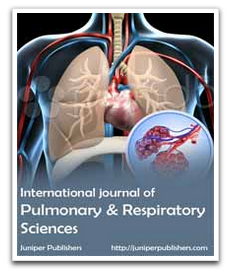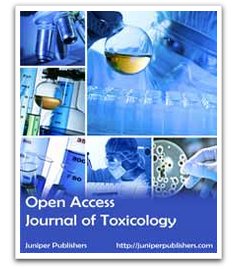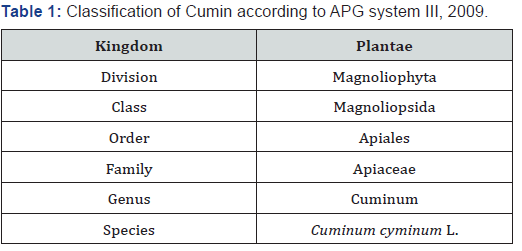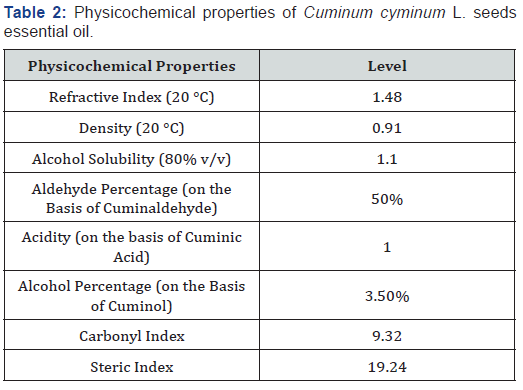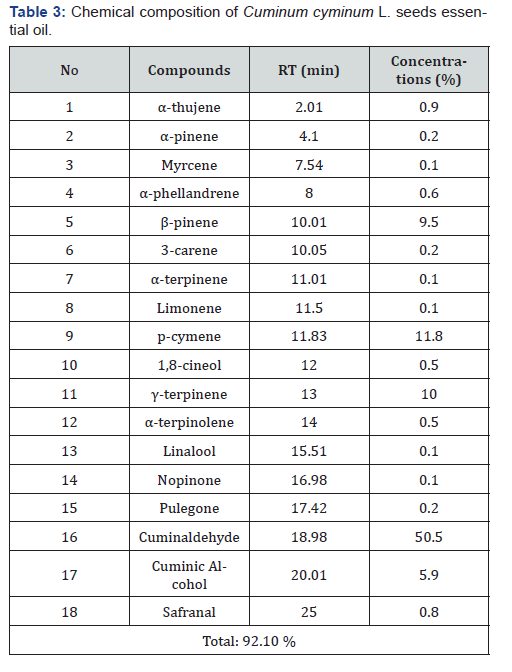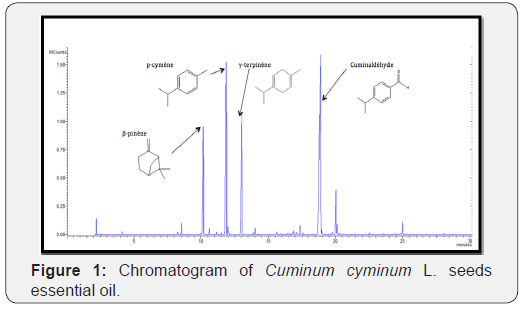
Haitian officials, in line with most country leaders
around the world, announced a series of health, hygiene and safety
precautions following the COVID-19 global pandemic early in 2020. The
tiny nation (10,714 square miles) situated on the island of Hispaniola,
still recovering from the devastating 2010 earthquake, which claimed the
lives of close to two hundred thousand people, seemed prepared to take
on the challenges of COVID-19. Businesses and schools immediately
closed, face masks and hand sanitizers were distributed by the
thousands. But the effects of emergency injunctions that were not geared
towards capacity-building, but rather prevention of rapid infectious
disease transmission, could prove debilitating for the impoverished
nation over the long-term. Primary and secondary school enrollment rates
in Haiti are at an all-time low, and projections for the Haitian
economy are dismal (-3.5% GDP growth 2020f) (World Bank 2020: 27). As a
retrospective study, this paper conducts a critical quantitative and
qualitative analysis of humanitarian aid, gender-based violence, and
urbanism in Haiti, revealing that gender-responsive planning has a
greater role to play in state-led disaster management plans and
procedures for achieving long-term equity and sustainable economic
growth.
Keywords: Urban informality; Gender-Based Violence (GBV); Gender-Responsive Planning; Humanitarian aid; Earthquake; Haiti
Le Nouvelliste reported that emergency units at
l’Hôpital de l’Université d’État d’Haïti (HUEH) (State University of
Haiti Hospital) were overwhelmed by the COVID-19 pandemic in early
spring 2020. With no quarantine units at HUEH and only 37 of 124 ICU
beds nationwide meeting international ICU standards for a country of
more than 10 million people [1], critical care units could not meet
testing and treatment requirements of COVID-19 patients. How was it
possible that nearly a decade after receiving more than 300 million USD
from intergovernmental agencies for capacity-building projects, the
Haitian healthcare system was operating with only 37 ICU beds? Following
the January 12, 2010 earthquake, the Interim Haiti Recovery Commission
(IHRC) was established to manage the implementation of aid programs in
Haiti. Operating with over 300 million USD in funding from the U.S.
government, the IHRC, co-chaired by the Government of Haiti (former
Haitian Prime Minister Jean-Max Bellerive) and the UN Special Envoy to
Haiti (former U.S. President William J. Clinton), had as its mandate: 1)
Creation of new jobs in textile
and manufacturing; 2) Support for people with disabilities; 3)
Development of microfinance opportunities for small businesses; 4)
Expansion of the Haitian public education system with support from the
Inter-American Development Bank (IADB) and USAID; 5) Resettlement of
displaced persons; and 6) Major debris removal [2,3]. When the IHRC’s
mandate expired on October 21, 2011, little progress was made on the
aforementioned. During the tenure of the IHRC, limited attention was
given to soft infrastructure—the political and social systems in Haiti,
weakened by decades of political instability and violence—and the
important role that Haitian women have played in Haiti’s critical care
and rebuilding processes.
Gender-responsive planning calls for a defined
gender-focused plan or system that includes the linkages between public
policies, resources, social capital, and gender [4]. Gender-responsive
planning, policies, and approaches can include measures that take into
account the special needs of women and girls in health care delivery and
access; enhanced provisions for women in negotiating land use
agreements; and guidelines for protecting women and
girls under the judiciary and police force [5]. This article is a study
on gender-responsive planning in a post-disaster context through
an analysis of intergovernmental and non-governmental agencies
and their partial successes and failures in Haiti. Ultimately, this
work offers a framework for understanding the multiple impacts
of urban informality and gender-based violence (GBV); and
theoretical approaches for managing weak state failure and aid
effectiveness through gender-responsive planning.
Urban Informality in International Development
Urban informality and informal economy are the byproducts
of prescriptive and reactionary state and inter-organizationled
economic and social reforms. Structural adjustment reforms
forwarded by the World Bank and IMF as solutions to poverty
and debt promoted liberalization and privatization schemes
throughout the 1980s and 1990s in Latin America and the
Caribbean, Asia, and Africa. Structural adjustment reforms enticed
new investments in manufacturing and cheap labor to meet the
demands of international trade and quick output. However,
economic deregulation also meant lowered wages and limited
social protections, forcing many households into poverty and the
rapid urbanization of cities unprepared to meet the basic needs
(water, sanitation, housing) of poor, rural, migrants in search of jobs
in cities. Urban informality soon translated to people adapting to
life in impoverished conditions outside of formal laws or sanctions.
Some development economists like Hernando De Soto [6] might
celebrate urban informality as a reflection of human agency and
innovation amidst poverty, political oppression, and instability.
While other international development theorists might point
out that urban informality raises issues related to exclusion from
formal markets and distributive justice—who gets to own property
and who does not? [7]. Examples of urban informality include
informal housing subdivisions in the Global South, like tent cities
in Haiti, squatter settlements in India, or favelas in Brazil—that
although formed through cooperative land agreements between
individuals and families over decades, remain in violation of land
use laws. Extralegal transactions in urban informal economies
are frequently conducted under the auspices of formal state
officials, who sometimes participate in informal markets for their
own benefit. In Pakistan, “Karachi middlemen” serve as informal
intermediaries between poor migrants, squatters, shopkeepers,
and local authorities [8]. In the late 1940s, Karachi experienced
a swell in rural-urban migrants, partly because of rapid growth
in Pakistan’s textile and manufacturing industry promoted
under the Colombo Plan in 1951 for the Asia-Pacific region and
Pakistan’s Five-Year Plans, installed under the first Prime Minister
of Pakistan Liaquat Ali Khan in 1948 (ending around 1998-1999).
Where city and state officials were not financially or politically
equipped to deal with major shifts in population demographics,
housing and employment demands, middlemen came into play
[8]. Middlemen would meet the needs of low-income migrants in
Karachi, by collecting subsistence payments. These payments were
then exchanged through bribes or pay-offs for “rights” to create
and manage informal settlements and activities around the city
[8]. While the activities of modern-day middlemen have shifted
to meeting the consumerist aspirations of Karachi’s growing
middle-class, the continued influence of middlemen as community
stakeholders reinforces the idea that urban informality produces
both positive and negative externalities within middle and lowincome
state development.
The amalgamation of poor migrants and limited formal
employment opportunities, peri-urbanization, privatization
during the 1980s under El Gran Viraje (The Great Turnaround),
work stoppages, and public strikes created Venezuela’s presentday
barrios, or urban informal settlements that are now
permanent fixtures across the principal city of Caracas. With
President Chavez’s election in 1999 and social policy reforms
implemented under his administration, rates of poverty, extreme
poverty, and households in poverty saw an overall decline in
Venezuela: “the percentage of households in poverty declined
by more than half, from 54 percent in the first half of 2003, to an
estimated 26 percent at the end of 2008” [9]. Yet, the aftershocks
felt from repeated coup attempts (1992; 2019) have left the oilrich
nation still struggling to manage a deep debt crisis and social
unrest in the barrios.
Urban Informality in Haiti
Well before the 2020 COVID-19 pandemic and 2010
earthquake, informal networks and informal aid substituted much
of the core state planning operations in Haiti. Like Venezuela
and Pakistan, urban informality in Haiti (Figure 1) was largely
the outgrowth of structural adjustment reforms instituted in the
1980s and 1990s by the World Bank and IMF, which encouraged
decentralization and privatization of public goods and services
[10]. Peri-urbanization, tent cities, shadow police forces, and
extralegal transactions for transport (tap taps), housing, and food
comprise urban informal economy in Haiti. A 2002 report from the
World Bank Report posed the question: “Is Haiti a decomposing
state?” “Est Haïti un état en decomposition?” The short answer
from the authors was no. The longer conclusion was that poverty,
informal economy, political instability, limited health and hygiene
services, informal unemployment and a weak judiciary system
made funds for poverty reduction ineffective, and Haiti susceptible
to persistent economic decline.
Informal Economy
Urban informality in Haiti operates as a socio-cultural
informal sub-economy with domestic and international informal
actors managing violence, cultural and social customs, and
abject poverty. Haiti’s informal actors can be likened to “informal
street-level bureaucrats”—who relying on trust, loyalty, and
reciprocity build formal ties with local officials to meet demands
such as food, health care, and housing in the community. Michael
Lipsky’s pioneering work on street-level bureaucrats in Streetlevel
Bureaucracy: Dilemmas of the Individual in Public Services
[11] posited that street-level bureaucrats exercised a great level
of discretion over the implementation of public policies. A social
worker, for example, enrolling clients into health care plans or
unemployment insurance at a one-stop center in the United
States must determine client eligibility through assessments and
interviews. In the absence of a strong state apparatus, informal
street-level bureaucrats make similar determinations, but operate
with higher transaction costs because of the heightened likelihood
of misinformation, corruption, and lack of social insurance or
protection.
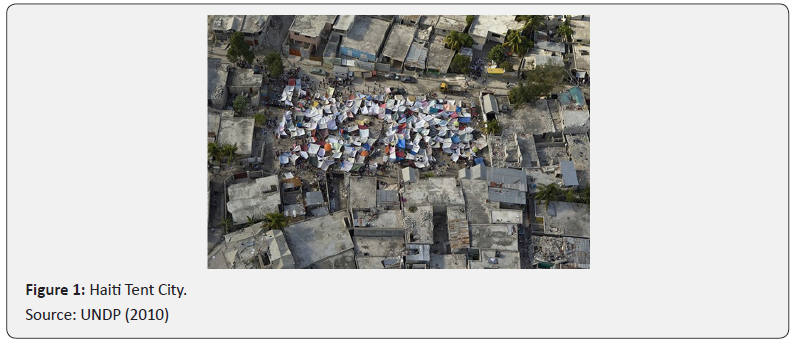
Haiti’s “informal street-level bureaucrats” were present in the
days, months, and years following the 2010 earthquake, managing
donations, housing, and security around tent cities. After the 2010
earthquake, nearly 40% of residents in temporary camps reported
receiving informal aid, like cash remittances, from informal
sources like relatives and friends—not government agencies or
local authorities—while 32% received no material assistance
at all [12]. Formal assistance came in the form of donated tents
and tarpaulins from agencies like the World Bank, the Red Cross,
Catholic Relief Services, Islamic Relief, and Doctors Without
Borders [12].
Aid in the form of cash remittances is common in developing
countries: “In 2018, over 200 million migrant workers sent $689
billion back home to remittance reliant countries, of which $529
billion went to developing countries” [13]. Aid from “home”
through informal channels is perceived to be more reliable,
cheaper, and under less public administrative scrutiny. A 2003
survey on remittances in South Africa found that “remittances
up to R250 to neighboring countries cost R25 and R50, through
friends and taxi drivers, respectively, as compared with over R100
through registered banks and over R80 through money transfer
agents like MoneyGram and Western Union” [14]. Informal aid
remittances have also driven the development of mobile banking
technology in the Caribbean, Asia, and Africa as the preferred
channel for informal cross-border remittances, which increased
to 51.8% in 2015 [15]. Remittances to Haiti via formal channels
reached 3.3 billion USD in 2019, almost 37% of the country’s
GDP [16]—unrecorded transfers of money through couriers
though are projected to be higher [17]. The overall trend towards
informal aid remittances over the past two decades reflects
a growing Haitian diaspora and new technologies, outside of
traditional banking, that have facilitated informal aid assistance.
Informal economy through aid remittances however provides no
viable opportunities for formal employment or investment back
into the local economy. Rather, low wage workers in the informal
sector—especially women, employed as domestic workers, waste
pickers or street vendors—are subject to higher incidences of
economic and physical violence in abusive workplaces (Figure
2). Occupational gender segregation in the neoliberal era reflects
a gendered provisioning of goods, services and labor—or what
economist Nancy Folbre [18] calls “economies of care” that are
poorly regulated.
In Haiti, irregular and informal work has exposed women
to workplace violence and economic hardship with limited
alternative options. Surveys from the Haitian Institute of Statistics
and Information Sciences (IHSI) between 1990 and 2000 showed
that structural unemployment in Haiti was due in large part to
the prevalence of low skilled informal work and occupational
gender segregation. Women made up 60.7% of the unemployed
population, and men 43.1% [19]. Nearly 44% of all households
were female headed households, with women and girls employed
in the informal sector to varying degrees as cooks, nannies, or
housekeepers [19]. Young Haitian women and men seeking new
formal employment opportunities were often recruited through
informal channels to work in “bateys,” or sugar mill camps, in the
Dominican Republic, under the guise that they would eventually
receive formal citizenship status and economic rights as regular
wage earners. However, work in the bateys is typically dangerous
and laborers are often given fraudulent working papers that make
it almost impossible to regularize their status as agricultural
employees.
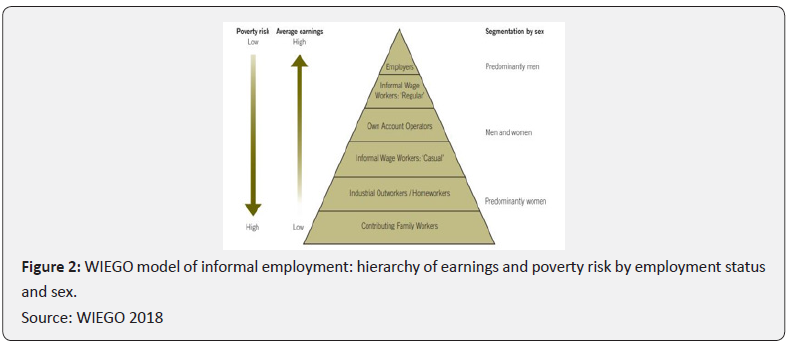
Gender-Based Violence (GBV) and Urban Informality
The 2006 film Ghosts of Cité Soleil, which introduced the
world to “Lele” Senlis, a French aid worker, and the leaders of
Chimères “Ghosts,” a notorious gang in Haiti’s Cité Soleil slum,
revealed the prominence of contemporary urban gangs in Haiti. In
the months following the 2010 earthquake in Haiti, international
private security officers, urban gangs like the Chimères, and ex-
FADH (Forces Armées d’Haïti—FAd’H) paramilitary units took
to patrolling Haiti’s tent cities and surrounding neighbourhoods
(Table 1) —sometimes in concert with, or compensating for the
Haitian National Police (HNP), already strained from limited
funding and tensions from political violence [20]. Informal
security networks and private security firms attending to foreign
dignitaries and UN peacekeeping forces committed or ignored
acts of gender-based violence in Haiti after the 2010 earthquake.
Doctors Without Borders reported treating two hundred and
twelve survivors of sexual and gender-based violence (GBV)
five months after the January earthquake [21,22]. The United
Nations Stabilisation Mission in Haiti (MINUSTAH), which ended
its thirteen-year mission in Haiti in 2017, came under fire for
accounts of sexual abuse involving Haitian children. Research
studies published in 2019 found that MINUSTAH personnel had
fathered hundreds of children, nicknamed Petit-MINUSTAH,
“little MINUSTAH,” with Haitian women and adolescents. Some
families had also received small allowances for child rearing from
MINUSTAH officials [23,24]. Instead of focusing on the underlying
causes of GBV in tent cities linked to informal security personnel,
and the spread of misinformation stemming from poor social and
economic supports, the IHRC, MINUSTAH, and other UN agencies
continued to argue that poverty, prostitution, and living conditions
in tent cities were to blame for the increase in rates of GBV. In a
January 16, 2011 press release, CEO of the UN Foundation, Kathy
Calvin wrote, “[Camp residents] need lighting so that women
and young girls can feel safer when walking to the latrines…
That is why the United Nations, the UN Foundation, and other
partners are distributing solar-powered lights to camps” [25].
Solar powered lights, while well-intentioned, were a band-aid
solution to the systemic violence, corruption, and mishandling of
GBV incidents throughout Haiti’s tent cities and slums. Managing
urban informality and GBV in Haiti’s tent cities would prove
pointless, so long as root-cause factors like systemic exclusion of
Haitian women’s organizations and misreporting of data, budgets,
and GBV were not addressed.

Gender-Responsive Planning
The unplanned and unplannable are frequently the outcomes
of unequal power relations expressed through state action or
inaction. Gender-responsive planning (Figure 3) as a mechanism
for state intervention, stresses a critical overhaul of country
assessment plans to include sex-disaggregated data, time use
studies, and strategic gender needs alongside practical gender
needs. Consensus on gender-responsive planning as a quantitative
and qualitative methodological approach to state planning,
monitoring, and evaluation plans grew out of the 1995 Beijing
Declaration and Platform for Action. The Platform reaffirmed the
“human rights of women and of the girl child as an inalienable,
integral and indivisible part of all human rights and fundamental
freedoms” (1995 Beijing Platform for Action: 2). The Platform also
urged government leaders to:
Gender-Responsive Planning
The unplanned and unplannable are frequently the outcomes
of unequal power relations expressed through state action or
inaction. Gender-responsive planning (Figure 3) as a mechanism
for state intervention, stresses a critical overhaul of country
assessment plans to include sex-disaggregated data, time use
studies, and strategic gender needs alongside practical gender
needs. Consensus on gender-responsive planning as a quantitative
and qualitative methodological approach to state planning,
monitoring, and evaluation plans grew out of the 1995 Beijing
Declaration and Platform for Action. The Platform reaffirmed the
“human rights of women and of the girl child as an inalienable,
integral and indivisible part of all human rights and fundamental
freedoms” (1995 Beijing Platform for Action: 2). The Platform also
urged government leaders to:

Analyse, from a gender perspective, policies and programmes
- including those related to macroeconomic stability, structural
adjustment, external debt problems, taxation, investments,
employment, markets and all relevant sectors of the economy
- with respect to their impact on poverty, on inequality and
particularly on women; assess their impact on family well-being
and conditions and adjust them, as appropriate, to promote more
equitable distribution of productive assets, wealth, opportunities,
income and services…(g) Provide adequate safety nets and
strengthen State-based and community-based support systems,
as an integral part of social policy, in order to enable women living
in poverty to withstand adverse economic environments and
preserve their livelihood, assets and revenues in times of crisis;
(1995 Beijing Platform for Action: 20-21)
Substantial scholarship on applied approaches to genderresponsive
planning support the 1995 Platform for Action.
Caroline Moser’s triple roles theory [26] and Naila Kabeer’s Social
Relations Approach (2005) for example provide a conceptual
framework for understanding gender-responsive planning as the
“interrelationship between agency, resources, and achievements”
and power sharing (Kabeer 2005: 15). Moser’s triple roles
theory describes how women are simultaneously reproducers,
community managers and wage earners [26]. Kabeer’s Social
Relations Approach explains that “social relationships…govern
access” to resources, labor, time, and services (Kabeer 2005: 13).
This scholarship has helped advance a greater understanding
of the consequences of transnational families, transnational
motherhood, social capital, female headed households, division of
labor, and female migrant networks. UN agencies have endeavored
to improve research on unpaid care work and the socioeconomic
contributions of women and girls in low- and middle-income
countries. Additionally, the push for more sex-disaggregated data
and time use studies through gender-responsive planning over
the past two decades has created a new field of opportunities
for critical research and intervention from NGOs and non-profits
around the world. In the Republic of Korea, researchers found that
unpaid care work was “equivalent to 4,407% of the value of paid
care work” [27]. On transnational families and public security, the
Romanian NGO Alternative Sociale determined that when mothers
migrated, despite a private care market of babysitters, tutors, and
surrogate care takers, there was still an increase in rates of school
absenteeism and dropouts [28]. This research has encouraged the
creation of new programming in education, maternal care, food
security, and criminal justice to support women, parents, and girls
globally.
Sociocultural factors have played an important role in shaping
how officials, citizens, and institutions in Haiti document and respond to GBV, complicating traditional gender-responsive
planning methods and approaches. Women in certain trade
unions and industries cited sexual harassment from peers and
supervisors, but many victims were either reluctant to report
the harassment or reports were disregarded by authorities as
“hearsay” [19]. Fear of reprisals, pressure, stereotypes, and
prejudice from the victim’s family or the perpetrator’s family were
also factors that impacted reporting and accountability on GBV.
A 2016-2017 “Mortality, Morbidity and Use of Services Survey in
Haiti” Enquête Mortalité, Morbidité et Utilisation des Services en
Haïti (EMMUS) for instance found that of the 14,371 Haitian women
surveyed between the ages of 15 and 49, more than 54% never
sought out help or spoke to anyone about incidences of emotional,
sexual or physical violence (EMMUS 2018: 17). Uneducated and
poor Haitian women were also less likely to receive information
from clinics on STDs and HIV/AIDS prevention and to negotiate
protected sex with partners, increasing the likelihood of “survival
sex” and other risky behavior [19] Of the approximately 150,000
adults living with HIV/AIDS in Haiti, 87,000, or 58% were women
in 2018. New infections were more prevalent among young women
between the ages of 15 and 24—1600 new HIV/AIDS infections in
2018 were among young women, less than 1000 new infections
were reported among young men (UNAIDS 2018).
Structural Factors
Building on momentum from the 5-year plan (2006-2011)
established by the “Concertation Nationale Contre les Violences
Faites aux Femmes,” “National Convention Against Violence
Against Women” organized by the Haitian Ministry of Women’s
Affairs, the Haitian Ministry of Health, and Prime Minister Gérard
Latortue, Haitian women’s organizations attempted to join
programming efforts of the UN GBV Sub-Cluster post-earthquake
[29]. However, their attempts were blocked by the UN GBV Sub-
Cluster [21]. In a joint report to the UN Human Rights Council in
April 2011, the international human rights organization, MADRE,
in partnership with Commission of Women Victims for Victims
(KOFAVIV), Women Victims, Standing (FAVILEK), and National
Coordination for Victims Direct (KONAMAVID) produced a report
titled “Limited Access to Medical Services, Lack of Adequate
Security in the Camps or Police Response, and the Exclusion
of Grassroots Organizations” on the alarming situation of GBV
in Haiti post-earthquake [21]. MADRE and its collaborators
also argued that rejecting Haitian women’s groups violated the
Inter-American Convention on the Prevention, Punishment and
Eradication of Violence Against Women (“Belém do Pará”), UN
Security Council Resolution 1325 and the UN Guiding Principles
on Internal Displacement.
In a letter from the Haitian Ministry of Women’s Affairs to the
UN GBV Sub Cluster dated February 17, 2011, Minister of Women’s
Affairs Marjory Michel decried the deplorable conditions of Haitian
women and girls in tent cities—noting limited UN support for
women and girls on the ground and exclusion of Haitian women’s
organizations from UN planning and procedures post-earthquake
(Figure 4). However, with almost no accountability measures
in place to ensure transparency or a formal response, the letter
was ignored by the UN GBV Sub Cluster [21]. Reported feelings of
disrespect and mistrust set the tone for many of the negotiations
and meetings amongst Haitian and foreign leaders following the
2010 earthquake—with even President René Préval lamenting,
right after the earthquake, that the only people who seemed to be
with him were journalists trying to snap pictures of dead bodies
[30]. The crisis of leadership in Haiti had a direct impact on the
limited interventions of the IHRC. Early on, the IHRC 2010 Project
Proposal, responding to the concerns of grassroots women’s
organizations, had in fact integrated a section on “Protection,
Care and Support for Women who are Victims of Violence in
Haiti.” But the proposal suffered from three key omissions: 1) a
funds disbursement strategy for the 10.6 million USD budget
2) an actionable timeline with steps towards GBV prevention
programming 3) Haitian partners or NGOs that could assist with
program implementation (Figure 5). Weakened by organizational
mismanagement, and funds directed towards other immediate
crises (like food, medicine, and sanitation), the IHRC ended its
mandate as a missed opportunity to develop new institutions or
programs in education and health care that could have benefitted
Haitian men, women, and children past the 2010 earthquake.
Socio-political Factors
In the years before the 2010 earthquake, Haitian women and
Haitian women’s associations were severely underrepresented
within the legislative bodies of the Haitian government and
administrative positions of power. In “1990, the number was
down to 34 elected women: five as mayors, 17 as second member
of the Board and 12 as the third member. In 1997, only 6 of the
127 mayors were women. In 2000, there was a slight increase,
with 25 women being elected mayors in four Departments” [19].
In the 2015-2016 elections, the Institute for Justice & Democracy
in Haiti reported that women still remained underrepresented in
politics: “In the August and October, 2015 elections, 22 out of 232
senatorial candidates were women (12 percent)…Of the Chamber
of Deputy candidates, 129 out of 1621 were women (8 percent)”
[31]. Political activist and economist, Myriam Merlet who died
in the 2010 earthquake, argued that generally structural sexism
made it difficult for women to consider political careers in Haiti.
According to Merlet, systemic biases, women with lower levels of
educational attainment, and widespread beliefs that politics are
too “dirty” and dangerous for women contributed to low rates of
political participation [32]. To overcome structural sexism would
necessitate a greater focus on strategic gender needs at all levels in
government, health care, economy, and society. Whereas practical
gender needs are based on survival—“a response to an immediate
perceived necessity” “formulated from the concrete conditions
women experience” [33]—strategic gender needs refer to power
relationships in the delivery of health and human services.

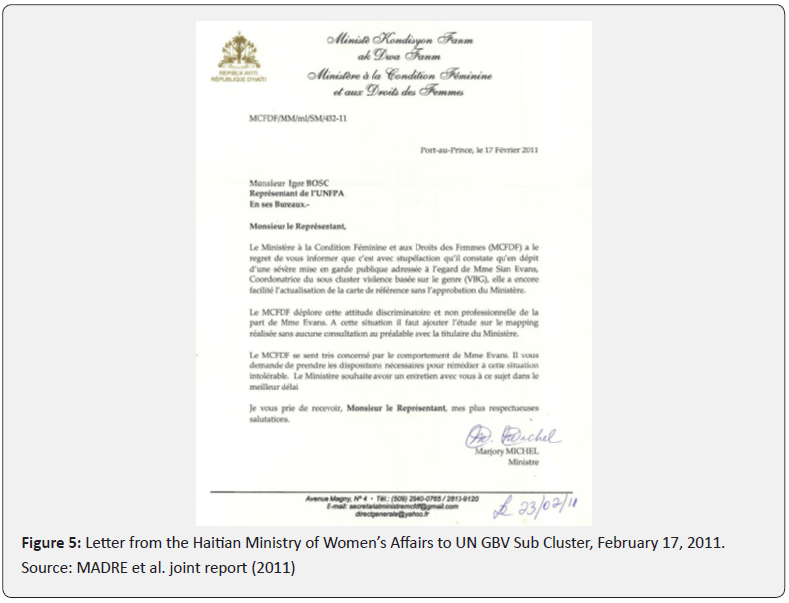
Strategic Gender Needs
Oftentimes, practical gender needs attract more attention and
funding during crises and disasters since they relate to human
survival. However, strategic gender needs are “those needs which
are formulated from the analysis of women’s subordination
to men, and deriving out of this the strategic gender interest
identified for an alternative” [33]. Formal state officials mediate
strategic gender needs “between state and civil society…within
the family between men, women, and children”, which “has critical
implications for the identification of the ‘room to manoeuvre’ to
address strategic gender needs” [34]. Feminist epistemologies
on planning and ways of understanding gender through social
positioning compel a greater consideration of location, power, and
the lived, relational experiences of men, women and children—to
the extent “that practical gender needs only become ‘feminist’ if
and when transformed into strategic gender needs” [33]. Stateapproved
programs on women’s policies encourage the notion
that a state agenda on “feminism” does have a place in public,
political, popular discourse. Strategic gender needs move past
binaries of “survival-necessity” to state-led initiatives and public
programming on gender equality.
Implementing Strategic Gender Needs in the Haitian
Context
“State feminism” in Haiti was most visible throughout
the Duvalier regime between 1957 and 1971. The Duvalier
propaganda machine engaged women through political narratives
like the “Marie Jeanne”—daughter of the revolution [35]. This
increased politicization turned women from “political innocents”
to “political agents” –which not only created a new role for
upwardly mobile middle- and upper-class Haitian women in
Haitian society and economy, but also unleashed a wave of terror
against both men and women, considered enemies of the state
[35]. In 1986, several weeks after the overthrow of Jean-Claude
Duvalier (Baby Doc), who succeeded his father Francois Duvalier
(Papa Doc) in 1971, thirty-thousand women, represented by over
fifteen women’s organizations, assembled in Port-au-Prince to
demand their inclusion in the newly formed democratic Haitian
government [35]. In fact, theirs was the first demonstration
following the overthrow of the Duvalier government. Haitian
women were, as Myriam Merlet remarked, “[Revolting] against
exclusion. The country was being remade and we didn’t want it
to be remade without us ‘nou pa t vle peyi a ta refet san nou’ [36].
Grassroots pressure led by women’s organization in the 1980s
led to new provisions for strategic gender needs. The Haitian
Constitution in 1987 established new articles related to gender
equality. Articles 16, 17 and 18 of the 1987 Haitian Constitution
define citizenship as “the combination of civil and political rights …
‘all Haitians regardless of sex or marital status, who have attained
eighteen years of age, may exercise their political and civil rights’
…‘Haitians shall be equal before the law, subject to the advantages
conferred on native-born Haitians who have never renounced
their nationality’” [37]. In the early 1980s, women’s groups grew
alongside the Haitian government transitioning from dictatorship
to democracy, representing a cross-section of goals and interests
related to advancing women’s rights, housing, education, and
workplace equality (Table 2). Some traditional women’s clubs, such
as the Ligue, the Club des Femmes de Carriere (Club of Professional
Women) focused on philanthropic efforts to raise awareness on
promoting gender equality in the workplace and higher education
[33]. Other groups, such as Fanm d’Ayiti, Kay Fanm and Ligue des
Femmes Rurales (League of Rural Women), focused on practical
gender needs, or “survival issues,” such as food and shelter. There
were more groups like the Association des Anciennes de Ste.
Rose de Lima (Female Alumnae of St. Rose) that offered a range
of services that met both strategic and practical gender needs
like training centres on healthcare for women and children, and
education services for the poor [33]. Additional women’s groups
that were active between 1987 and 1991 included associations
like SOFA, FAVILEK, Fanm Deside Jacmel, Asosyasyon Fanm Solèy
d’Ayiti, Mouvement des femmes Haitiennes pour l’Education et le
Développement (Haitian Women’s Movement for Education and
Development) (MOUFHED). These organizations soon coalesced
into a powerful lobby in Haitian government. In 1990, the Lavalas
Movement, the party platform for Haiti’s first democratically
elected President, Jean-Bertrand Aristide, received the support of
many women’s organizations [33]. Eight months after Aristide’s
election though, a military-led coup d’état in September 1991
overthrew his presidency [10]. The women’s organizations that
once flourished alongside the fledgling Aristide presidency and
promises from the 1987 Haitian Constitution, quickly descended
into turmoil. After the 1991 coup, paramilitary forces targeted
organizations that promoted gender equality, burning down offices
and destroying homes of suspected Aristide sympathizers [33].
In 1999, the UN Special Rapporteur on Violence Against Women,
Radhika Coomaraswamy observed that “following the military
coup d’état, Haitian women continue to suffer from …‘structural
violence’, targeted at the most vulnerable and poor…between
November 1994 and June 1999, the Ministry of Women’s Affairs
and Women’s Rights registered 1,500 cases of girls between the
ages of six and 15 who had been the victims of sexual abuse and
aggression” [38]. In 1994, backed by a United Nations Security
Council Resolution, Aristide returned to Haiti as president and
established the Ministry for the Status of Women and Women’s
Rights (MCFDF) (Ministry of Women’s Affairs) to address the
socioeconomic status of women in Haiti. In alignment with the
1995 Beijing Declaration, the MCFDF designed the following
platform: “Conceiving, developing and implementing a policy of
equality between men and women based on dissemination of the
gender perspective or analysis of social relations between men
and women… Boosting the political role of the MCFDF within the
State apparatus… Taking specific steps to promote and defend
women’s rights.” [19] Plans for a gender-based assessment of
budgets and expenditures were also in progress under the MCFDF,
alongside campaigns for more women in elected office. However, a
second coup in 2004, sent Aristide permanently into exile in South
Africa, and left MCFDF close to dissolution. In the years after the
2004 coup in Haiti, there was a resurgence of violent attacks on
women and girls. Reports published in The Lancet estimated that
between February 2004 and December 2005, 19,000 per 100,000
girls were raped in Port-au-Prince [39].
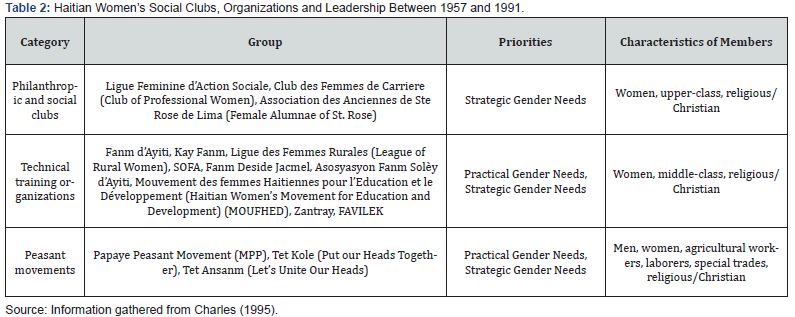
State Violence and GBV
GBV as an instrument of pacification campaigns, state conflict,
and warcraft has long been part of country rebuilding and
wartime narratives. During the “Rape of Nanjing” between 1937
and 1938 for example close to 20,000 women reported being
raped in China. Janjaweed militias in Sudan have commanded
gender-selective killings of millions since the early 2000s. In
Brazil, military occupations of favelas Complexo do Alemão and
Vila Cruzeiro under “pacification police units” leading up to the
World Cup (2014), have led to thousands of unreported deaths,
rapes, and kidnappings. On GBV and state violence in Haiti,
Duramy’s [40]. extensive study found that the effects of French
colonization and slavery could still be felt in the country—as skin
color, dialect, gender, and property ownership play a significant
role in exposure to and experiences of violence, starting at an
early age. It is with great difficulty though that the experiences
of GBV survivors, men, women, and children, are accounted for in
tribunals, commissions, or peacekeeping operations—not for lack
of technical expertise on the part of mediators, activists, and other
practitioners, but for lack of political will. Gender-responsive
planning in state development has occupied a marginal role
in war tribunals, economic development, and state planning,
because it often calls for perpetrators of GBV, and other corrupt
and incompetent officials to face prosecution, exile, or sanctions.
Often, these perpetrators are politically well-connected or hold
military rank.
At a 1986 meeting on the status of Haitian women, Haitian
human rights activist and scholar Suzy Castor declared: “During the
long political life of Haiti as a nation, the contributions of women
to the struggles against the oligarchy and for democracy were
significant. Yet, their political roles have not been recognized. Like
all the other ‘subalterns’ their history has been obscured. There is
an historical erasure of [woman’s] condition” [33]. This erasure is
intentional, owing to the legacies of postcolonialism, neoliberalism,
and the culture of foreign aid dependency in Haiti and the rest of
the Global South. Haitian history, in its ebbs and flows, has seen
surges and declines in the visibility and participation of women
in society and economy. With limited mechanisms to predict or
even forecast natural disasters, pandemics, and armed conflict,
greater attention must be paid to equity, instead of pre-emption
in state planning. Equity in public policy administration and
practice would resemble government bodies adopting methods
to redress grievances while strengthening laws for accountability
and transparency. Paul Collier’s Bottom Billion [41] and Dambisa
Moyo’s Dead Aid [42] are two influential works that have shaped
debates on equity, paternalism, conflict, and global governance
over the past decade [43-52]. Collier maintained that many
developing countries fall into the “conflict-trap,” where political
instability and violence from domestic coups foster corruption;
while Moyo specifically denounced the complacency of African
leaders, who for years neglected investing in domestic financial
markets and civil society, instead relying on humanitarian aid to
resolve national crises. Gender-responsive planning thus presents
as an opportunity to integrate equity into law and state practice to
strengthen community resiliency in times of conflict and distress
[53-65].

